Discussed in this post: 9 Books (The Master and His Emissary; One Plus One Equals One; The Soundscape; The Undiscovered Self; A Room of One’s Own; Minima Moralia; Whereas; The Spy Who Came in From the Cold; and Sabrina); 3 Movies (November; Thoroughbreds; and Happy End); 7 Documentaries (No Stone Unturned; Operation Odessa; When God Sleeps; Radio Bikini; Tawai; The Road Movie; and The Devil and Father Amorth).
Books
1. The Master and His Emissary: The Divided Brain and the Making of the Western World by Iain McGilchrist.

The first half of McGilchrist’s book on how the right and left hemispheres of the brain work together (or don’t) and what they bring to the table with their various perspectives is utterly fascinating and thoroughly enjoyable. His blend of neuroscience, social theory, philosophy (especially phenomenology) and a study of the arts is quite inspiring and unites disciplines in a way that I personally enjoy very much. The second half of the book, wherein McGilchrist relates the dominance of the right or left hemisphere to various trends or cultural or political developments is ambitious but much less convincing and, to my mind, sorely lacking any kind of post-Marxist, anti-oppression level of analysis. Still, his description of the primacy of the right hemisphere which looks at interconnectedness, the big picture, and is open to newness and wonder, which then experiences this and then passes the info to the left hemisphere which narrows the focus, takes things apart and as individuals, seeks further understanding, and then passes things back to the right hemisphere so that this is incorporated into how the right moves back out into the big picture, makes a lot of sense of trends that I have tried to pursue in my own life. Further, McGilchrist’s argument that global capitalism (although he doesn’t use that term for our contemporary context) is shaping the world from a thoroughly left hemisphere perspective (devoid of wonder, focused on utility, wherein things are studied in terms of usefulness rather than treated as sacred or wonderful in and of themselves) spiraling deeper and deeper into itself making it’s perspective appear more and more natural and as the only possible perspective to have, seems roughly accurate for the way in which civilization has progressed and likely will progress until it consumes itself. I loved a lot about this book, even if the second half fell flat in some significant ways. Great stuff all in all.
2. One Plus One Equals One: symbiosis and the evolution of complex life by John Archibald.

After reading The Influence of Cooperative Bacteria on Animal Host Biology (edited by Margaret McFall-Ngai) and Organism and Environment (by Sonia Sultan), I wrote to both McFall-Ngai and Sultan to express my gratitude to them for their work and to ask if they had any recommendations to make in terms of books to read that might be in their area of interest that might inspire similar feelings of wonder and gratitude in a reader like me. They each recommended two books. One Plus One Equals One was the first of those books that I read and it is marvelous. In it, John Archibald explores the role endosymbiosis plays in the evolution of complex life. Hence, especial attention is paid to mitochondria (often referred to as the battery or energy source of cells because of the adenosine triphosphate they produce) and chloroplasts because both of these things were once free standing organisms of their own and, had they not been incorporated into other kinds of prokaryotic life (first the mitochondria, then the chloroplasts, and while the chloroplast absorption has taken place several times over, it appears that the mitochondria absorption – the root of all eukaryotic life – only happened once, which is kind of fascinating in terms of what that says about complex life). If this sounds boring to you, it’s not! The way in which Archibald talks about proteins, DNA, how cells deal with (and regularly swap!) genetic material, and what one learns about the great and surprising diversity of life along the way, is absolutely fascinating and makes me grateful to be alive and a part of all of this. Not a bad feeling to get from a book.
3. The Soundscape: Our Sonic Environment and the Tuning of the World by R. Murray Schafer.
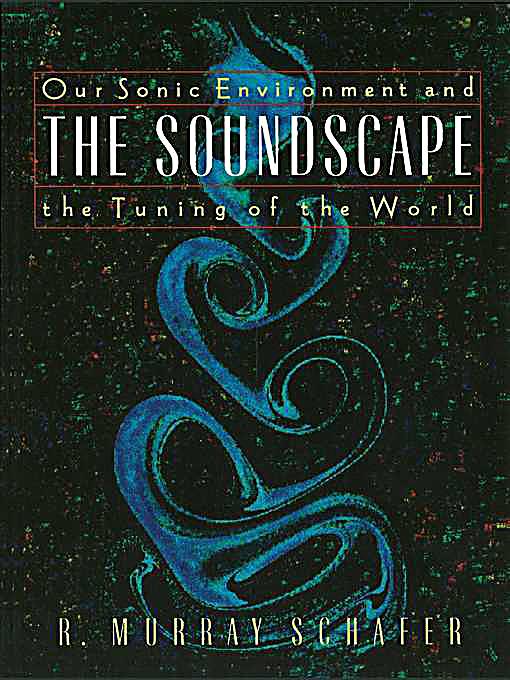
I was attracted to Schafer’s book because he was asking questions I had never considered before. But they were questions very relevant to my desire to become more connected to the environment I am and of which I am a part. Specifically, as a composer and music professor, Schafer asks questions about sound and how the sounds of our environment shape us, how we shape the sounds of our environment, what is lost or forgotten or transformed in all of that as we change the soundscape, and how this, in turn, reshapes us, and so on. It’s a fascinating and unique work, and helped open my eyes (and ears) to another part of life that I feel I have neglected. It reminded me of the way I felt when I first tripped and fell into social theory. That’s a good feeling. I certainly engage the soundscape around me much differently after reading this book.
4. The Undiscovered Self by C. G. Jung.

One of the regrettable things (imo), about Continental philosophy is the amount of attention it gives to Freud (more regrettable, though, is the amount of attention it gives to the Marquis de Sade). Jung, however, gets very little if any attention and, for a long time, I never thought much about him. However, two things have prompted me to check him out. First, some of my friends who are Jungian-ish have some very interesting things to say about notions related to the shadow self. Secondly, the all around Canadian asshole, woman hating, racist, fear-mongering, piece of shit, Jordan Peterson, also draws a lot on Jungian notions and that seems to have sparked something of a (renewed?) interest in a bastardized, dumbed down Jungianism in the alt-right and amongst Men’s Rights Activists and other fascist types. So, I figured it was time to let Jung speak for himself (especially since I found this book for a quarter… that may have been a factor…). In The Undiscovered Self Jung seems to be addressing two concerns. First, he is worried that the individual is getting lost in the collective (in both liberal democracies and the communist East) and he wants to emphasise that generalities, although useful as tools for certain ends, take us further from the truth than specifics (here, his section commenting on statistics seems to anticipate Foucauldian reflections on that topic as they apply to, say, population management). For Jung, there is really no such thing as a “happy nation.” A nation is not the kind of thing that can be “happy.” There are only happy (or unhappy or something else) individuals. So he wants to focus there because he feels that the individual is being lost. Second, Jung is worried that people, even when they focus on themselves as individuals, mistake their egos for their selves when really much of who they are is unconscious and rooted in instincts that were formed over many centuries and (quite often) in response to very different circumstances.
What I found most interesting in all of this, was Jung’s definition of religion which, I think, is the inspiration for Badiou’s understanding of faith as fidelity to an Event. Badiou never credits Jung (as far as I can recall) but the resemblance is uncanny. Thus, Jung says the following:
… religion means dependence on and submission to the irrational fact of experience. These do not refer directly to social and physical conditions; they concern far more the individual’s psychic attitude.
But it is possible to have an attitude to the external conditions of life only when there is a point of reference outside them. The religions give, or claim to give such a standpoint…
A creed gives expression to a definite collective belief, whereas the word religion expresses a subjective relationship to certain metaphysical, extramundane factors…
It is not ethical principles, however lofty, or creeds, however orthodox, that lay the foundations for the freedom and autonomy of the individual, but simply and solely the empirical awareness, the incontrovertible experience of an intensely personal, reciprocal relationship between man and an extramundane authority which acts as a counterpoise to the “world” and its “reason.” …
Belief is no adequate substitute for inner experience, and where this is absent even a strong faith which came miraculously as a gift of grace may depart equally miraculously. People call faith the true religious experience, but they do not stop to think that actually it is a secondary phenomenon arising from the fact that something happened to us in the first place which instilled [pistis] into us—that is, trust and loyalty.
Bam! How do you like them apples, Badiou? Anyway, I’m not sold on Jung’s thesis about the individual, although maybe I am if what he is doing is trying to help us recover the sacredness of individual beings. Because, for all the criticisms of post-modernism’s supposed “rampant individualism” it seems all individuals are equally lost when it comes to feeling like they are valuable or special or beloved. This, I think, is what Jung feared, although his focus on the individual qua individual, repeats something of the Enlightenment project and loses how so much of our specialness is contained not only in how we are connected to others but are also composed of others and, ourselves, compose others. That said, I enjoyed this text and will likely read some more by him.
5. A Room of One’s Own by Virginia Woolf.
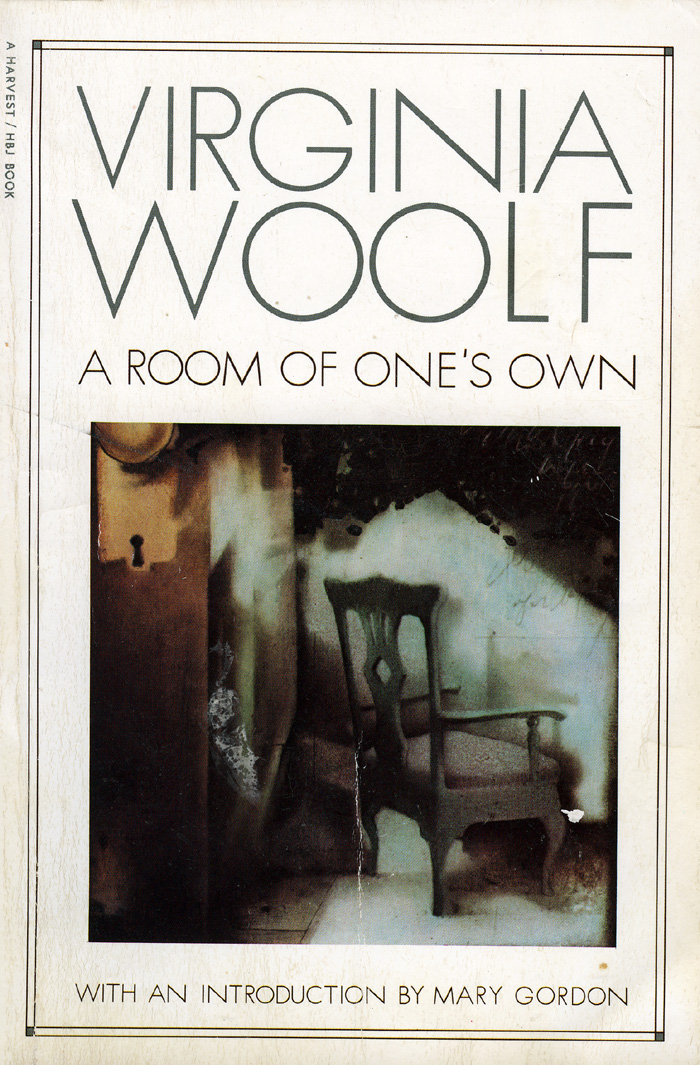
I’ve been thinking about how I’ve never actually read several classics of feminist theory (The Second Sex, A Room of One’s Own, etc.). I’ve been wondering how much this attitude of “oh, I’ll get to that later, right now this other text seems more exciting” is related to the way in which I am identified as male. Granted, I’ve done the same thing with most of Hegel and Hobbes and Kant and Aristotle and… well… a lot of others, so there’s that, but I was feeling in the mood for some theory and I thought it was time to start into Virginia Woolf. She is an undeniably talented writer, who can be subtly scathing, and pounce with unfailing precision while seeming to meander through a story. I’m looking forward to reading her novels.
6. Minima Moralia: Reflections from Damaged Life by Theodor Adorno.
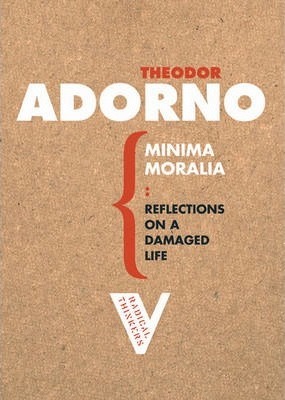
I’ve always felt like Adorno was a bit of a lacuna in my readings. Minima Moralia has been on my “to read” list for, oh, fourteen years(?), and so I finally sat down to read it. I was pretty underwhelmed by the whole thing. There were brief moments where I got excited but they passed pretty quickly. This feels like a good text for an undergraduate who is just wading into some of these waters, and I bet I would have loved it when I first came across it, but at this stage a lot of it felt old. Then again, I’m not all that into philosophy these days.
7. Whereas by Layli Long Soldier.
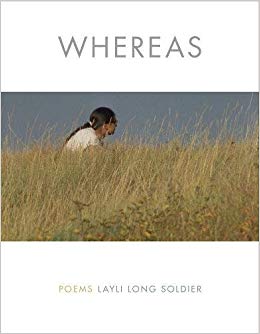
Initially, I struggled to get into this work by Oglala Lakota poet Layli Long Soldier, but I remembered that poets are often those who are fighting with all their strength to get words to communicate more than words. So, I struggled, too, to understand and suddenly I found myself breaking down as Long Soldier’s efforts slowly filled my heart and then, in one or two great rushes, burst it apart. Her struggles as a mother or not and her struggle as a member of a people who are colonized or not, are both wonderfully captured here. For those who have the patience for more challenging poetry, this text is well worth the time.
8. The Spy Who Came in From the Cold by John Le Carré.

Spy novels aren’t really my thing but this one is considered one of the best of all time and so I thought I’d give it a shot. I’m glad I did. I was worried I would get something like Ian Fleming’s Bond or Robert Ludlum’s Bourne, but this reads much more like something Steinbeck might have written if he were putting novels out during the Cold War. There is combination of stoicism and quiet mournfulness exhibited in Le Carré’s characters and his overall tone that I found quite pleasurable. And the story is well told, the words carefully chosen, and before I knew it I found myself regretting that I was done. I may have to try another one of his works.
9. Sabrina by Nick Drnaso.
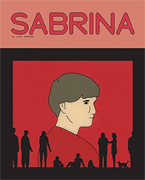
When I heard that a graphic novel had been nominated for a Booker Prize for the first time, I thought, “huh, that must be a hella good graphic novel because some hella hella good graphic novels have come and gone without receiving that kind of attention.” Sabrina is that graphic novel and I promptly bought and read it. There is no denying that it is a good story, well told, and highly relevant to our contemporary context, wherein people struggle with a sense of dislocation, share intimate matters online, are regularly exposed to the rage of strangers, and are more connected to facebook than the world around them. But, as a graphic novel qua graphic novel, I don’t think Sabrina excels. It spends too much time with overly long speech bubbles and talking heads – a common flaw in so called “literary graphic novels.” It lacks the true mastery of the genre that you find in the work of Craig Thompson, Jeff Lemire, David B., Chabouté, or even Emily Carroll. So, okay, Sabrina is very good but not truly great. So why does it get the Booker nod? I’m guessing one of two reasons – either this is a publicity stunt to get media to pay more attention to the Booker (in which case, booooo!), or people like Thompson, Lemire, et al., have sufficiently paved the way so that people really are paying attention to graphic novels now, even if they weren’t when Blankets or Essex County first came out (in which case, fair enough). Anyway, it’s a good read.
Movies
1. November (2017) directed by Rainer Sarnet.

Estonian folk and fairy tales presented in stunning black and white and strung together in a coherent narrative, this movie hit me out of nowhere and is high in the standings for my favourite film I’ve seen so far this year. It’s hard to do what Sarnet has done here – blend together the sacred and the sordid, the wondrous, the monstrous, and the mundane, and present something truly unexpected something that feels as close to “new” as one will ever get in the world of film. I adored almost every minute of it and laughed out loud several times because of the delight it inspired. But, of course, people always want to look for lessons in fairy tales (whether overt lessons or less obvious lessons about dominant cultural values, acts of resistance that rise up from below, and so on) and, if you want to do that with this film, then I reckon examining the way in which desire is featured would be a good place to start. Almost everyone desires what they cannot have. The only people who have learned to live in the absence of desire are those who have resigned themselves to a life of misery, suffering, and loss. This resignation is not accompanied by a feeling of peace but, at moments at least, one can catch a break (like when the peasants rest and ignore the foreman when told to continue clearing stumps from a nobleman’s field). But, really, I don’t want to break down this film too much. I just want to watch it again. Really, this is why I root around in all kinds of somewhat obscure subgenres of film. Finding a movie like this makes all the near (or not so near) misses worthwhile.
2. Thoroughbreds (2017) directed by Cory Finley.
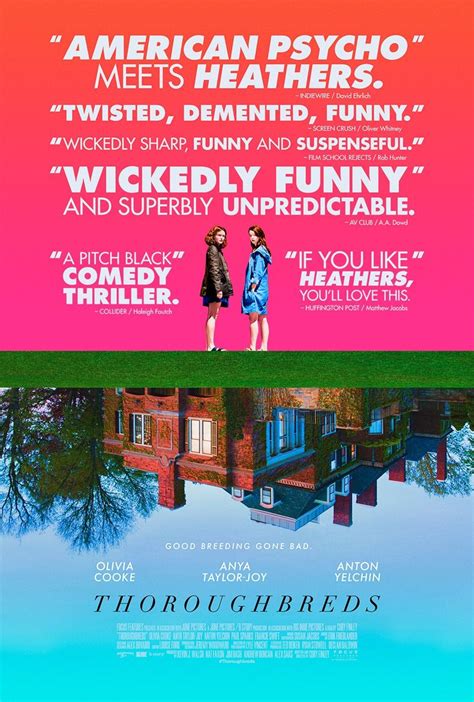
Thoroughbreds has received a fair bit of critical praise but it felt, to me, like an American attempt to accomplish something akin to what we’ve seen in Greek “weird wave” cinema. It’s a solid enough effort but, if you’re familiar with Lanthimos or Tsangari, it feels a bit derivative. Still, Thoroughbreds does have its moments and certain scenes really stand out. Additionally, Finley does a pretty good job of complicating notions of good and evil and how the heart and the mind sometimes come to radically different conclusions about those things. However, I feel like that dominant storyline (turns out the uber rich girl who exploits others to advance her own status is more monstrous than the [also uber rich] girl who kills if she feels it is the right thing to do) is sort of played out, even if Finley tries to provide more nuance to his characters. Its a decent enough film – and there is no doubt that Finley, a member of the “Youngblood” group of Directors, is an expert when it comes to how to craft a shot and set a scene – but, all in all, I found it a bit disappointing.
3. Happy End (2017) directed by Michael Haneke.
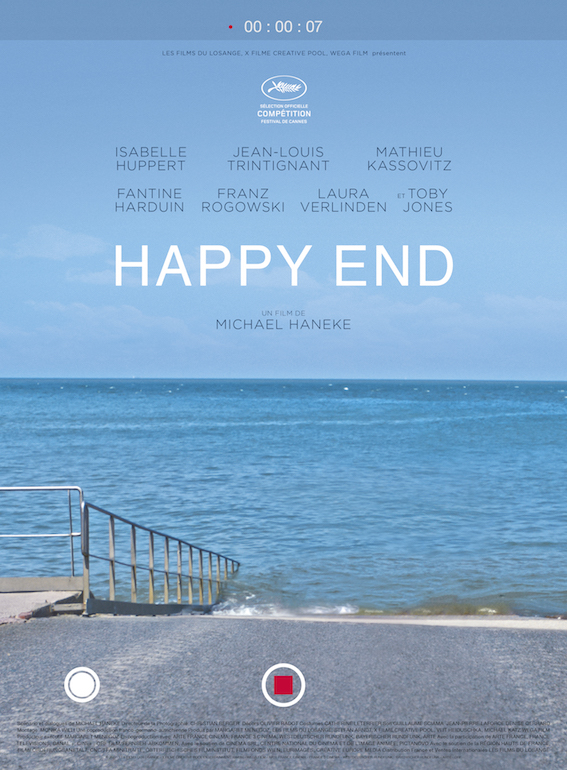
Why do so many highly praised films focus on the uber rich? I’m getting tired of watching the uber rich, even if their wardrobes and gardens and boats and manors offer impeccably stylish settings. I think I need to watch a few more Ken Loach films. Anyway, I seem to keep returning to Haneke – in part because I think he has gotten better with age (in part, I think, because he seems less inclined to force the viewer to stare unflinchingly at horror but finds more subtle ways to cause discomfort or leave the viewer feeling deeply unsettled but less certain why). Happy End does a wonderful job of slowly building, revealing, and weaving together characters who are all members of an extended family. It reminded me of the structure and substance of some of great classics of European literature (Anna Karenina being the most obvious point of reference), except that Tolstoy or Dostoyevsky, would have continued the film for another twelve hours, whereas Haneke cuts things off rather quickly. The climactic scene, wherein a disgraced son brings a group of African refugees into a very exclusive, very white, and very rich celebratory dinner party at Calais, is absolutely brilliantly done. One realizes that the thirteen year old girl, who passively watches first her mother and then her grandfather try to suicide (while filming them on her phone), is a mirror for the whole family, and her entire class, which does the same with the rest of the world. But this message is not thrown into the viewer’s face. It’s there if you stop to think about it. Neither overstated nor understated, it’s just right. Walking away from Happy End, I reflected on how hopeless it is to look to the rich for the kinds of changes we need to make the world a better place. So overwhelmed by their own sorrows, struggles, or day to day worries, and so utterly, utterly removed from points of meaningful connection with the poor, Haneke vividly captures their utter hopelessness. Thankfully, as Eugene Hutz reminds us, “illuminations never came from the crowned.”
Documentaries
1. No Stone Unturned (2017) directed by Alex Gibney.

It seems there is no shortage of documentaries exposing the corruption of the police and the ways in which they protect their own regardless of what they have done (be those killer cops or rapist cops or whatever-you-name-it-they’ve-protected-them cops), or treat vulnerable people in atrociously violent ways, or frame innocent people for horrible things in order to produce results or advance their careers. From The Thin Blue Line to the Paradise Lost trilogy to Do Not Resist and Let The Fire Burn, there is no shortage of material to choose from here. And yet, despite all that, police reforms do not seem forthcoming. This is largely because the propertied classes – whom the police actually serve and protect – have no significant interest in reforming the police. I mean, hey, they’re generally not the ones getting fucked. In fact, as far as they can tell, maybe the police need to fuck some people so that the propertied classes can sleep well at night.
No Stone Unturned is another film in this genre, focusing on a shooting at a small Irish bar during The Troubles, and it does a thorough job of figuring out what happened, how it happened, how the killers got away with it, how they still continue to get away with, and what impact this had on a small community and the family members of those who were killed and who fought and fought and fought and fought, over many, many difficult years, in order to bring the truth into the light. Along the way, the film also sheds some light on British colonialism in Ireland and the atrocities that came with that. It’s a good film – I have enjoyed a number of Alex Gibney’s films, although I’m daunted by the number of high quality works he is able to churn out – and I would recommend it. The important thing is to remember that these kinds of behaviours are not unique to Ireland during the Troubles. They are also characteristic of police forces in other colonized lands (like Canada).
2. Operation Odessa (2018) directed by Tiller Russell.

A film populated by larger than life characters (a Russian strip club owner in Florida who got his start working for the Gambino mob and who goes by the name of Tarzan, a high end auto seller named Juan who also does things like sell helicopters and speedboats to cartels, and a Cuban named Tony who was highly situated in Pablo Escobar’s international network), who are attempting a larger than life caper (buying a military submarine from post-Soviet Russia to sell to a Cartel), this was one non-stop wonderful romp. Easily one of the most entertaining documentaries I’ve watched in a long time. This is true, in part, because both Tarzan and Tony are incredibly charming and charismatic characters. One almost forgets that they are pimps and hitmen (and one can also easily forget that the guy who set Tarzan up to get nailed by the cops is reported to be deceased but no comment is made on how or when he died, but he sure disappears quickly from the story as soon as Tarzan knows the cops are onto him…). And so, sure, this documentary is like Scorsese’s wet dream, but what I find most fascinating as I think back on it is how it demonstrates how people who do horrible things on the regular can also be incredibly likeable people. Of course, much of a pimp’s job relies on his ability to be charming, and a good gangster knows the value of being able to gain the trust of others, but this is not something just limited larger than life criminals. Spend time with people with considerable wealth and power, get them interested in you, appear fascinating to them, and you will discover many of them are also seductive and incredibly charming and very easy to like. One can almost forget that property is theft and that wealth is the cause of poverty. Almost. Anyway, food for thought. Great documentary.
3. When God Sleeps (2017) directed by Till Schauder.
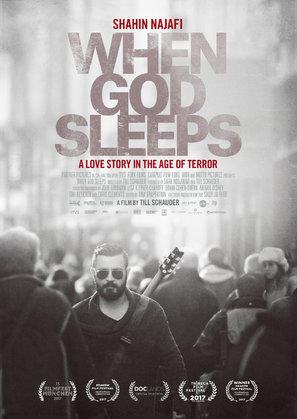
When God Sleeps follows the experiences of an Iranian musician who was a major pop star but who fell afoul of the religious authorities who issued a fatwa and offered a reward for his death. He fled to Germany, where he continued to speak and perform and, of all things, date the granddaughter of one of the fathers of the Iranian revolution. The pitch for the film made it sound a lot more interesting than it is (it’s only so-so), but after reading Reading Lolita in Tehran by Azar Nafisi I’ve been thinking a lot about Iran and how the cultural revolution there seems almost like a precursor to the Tea Party Revolution and the rise of Trump in America. The Iranian cultural revolution and the cultural revolution of Trumpism, driven by devoutly religious, women-hating, angry men, really look like two sides of the same coin (I mean, remember the response to the Dixie Chicks when they openly opposed Iraq II?). A lot of Americans and Iranians may not be too happy about these remarkable similarities but I think there’s a lot we can learn about America in the era of Trump if we consider Iran.
4. Radio Bikini (1988) directed by Robert Stone.

Between 1947 and 1956, the United States detonated 23 nuclear bombs at a small location in the South Pacific known as Bikini Atoll. Within this shower of bombs, was the largest nuclear weapon the United States has ever detonated (roughly 1,000 times stronger than the bombs dropped on Hiroshima and Nagasaki… although it was only about one third the size of the Tsar Bomba exploded by the USSR, which is kind of hard to take in). However, Bikini Atoll was the home to the indigenous Bikinians whom the United States Navy forced out of their homes and off their land (the Navy burned their houses before the ships even sailed), onto another island where they were left to literally starve to death. A media outcry occurred when the starving Bikinians were discovered so the United States moved them to another island (where they also could not practice their traditional ways of living amd where they remained dependent on handouts for food) and, although the Bikinians had been told the move was only temporary, radiation prevented them from returning to their homes (this radiation also poisoned many other islanders in the area, whom the United States promptly used as study subjects). Robert Stone’s documentary traces most of this, dealing almost entirely with original footage, and focusing somewhat more on the long-term impact that the nuclear fallout had on naïve and misled sailors than the impact it had on south pacific islanders. It’s a vivid example of how America always treats Indigenous peoples everywhere in territories it decides to claim as its own and then decimate.
5. Tawai: A Voice from the Forest (2017) directed by Bruce Parry.

Like most white people, Bruce Parry is adrift in the world and disconnected from the material environment. He lives in a culture, amongst a people, who have cordoned themselves off from any sense of interconnectedness, not only to space, but across time. Unlike most white people, Bruce Parry is trying to overcome this sense of disconnect by learning from those who have not arrived at this state. Having worked as a documentary film maker for the BBC, and having focused on ethnographic studies of Indigenous peoples living in remote environments, Parry has been exposed to people who are still very deeply connected with other forms of life. Hence, in this documentary he spends time with the Penan in Borneo (before their way of life is altogether destroyed by oil and plantation companies destroying their home and making their traditional way of life impossible). The Penam are nomadic hunter-gatherers very deeply connected to the forest in which they live. The forest lives and dies with them and they live and die with the forest (much like the words expressed by the Chenchu in India, in the open letter they recently penned to the world). Parry also spends time with the Pirhaha People in the Amazon, wherein individuals develop intimate relationships with the Spirits of the forest. And he spends time with Sadhus in India who go inwards to search for truth (and Iain McGilchrist even appears and discusses some of his work in The Master and His Emissary, which was a bit of a fun surprise). It’s a bit of a meandering film and, like Parry and most white folks, gets kind of lost while trying to find it’s way. Still it’s an admirable effort and I enjoyed it.
6. The Road Movie (2017) directed by Dimitrii Kalashnikov.

I have watched many a fail video, although I tend to stay away from the more severe ones involving serious injuries or car crash videos more generally (because I don’t really want to see that and, hey, as a lifelong pedestrian I nearly get killed by drivers not obeying traffic laws about two or three times a day), but this “found footage” compilation of Russian driving videos struck a nerve with many a reviewer (all but one of whom gave it quite high praise – the lone objector really hated it, though). To be honest, I had trouble staying interested in it. Granted, the fact I watched it without subtitles caused me to miss some of the more clever juxtapositions (a fist fight on the hood of the car while the car radio drones on about meditation and a course to help you attain inner peace) and also to miss out on some of the more tragic elements (bystanders talking about how there is a dead person in a car that just crashed), but, I don’t know, I didn’t think it was particularly profound or much of anything. I’m not sure if that says more about me or about the film.
7. The Devil and Father Amorth (2017) directed by Wiliam Friedkin.
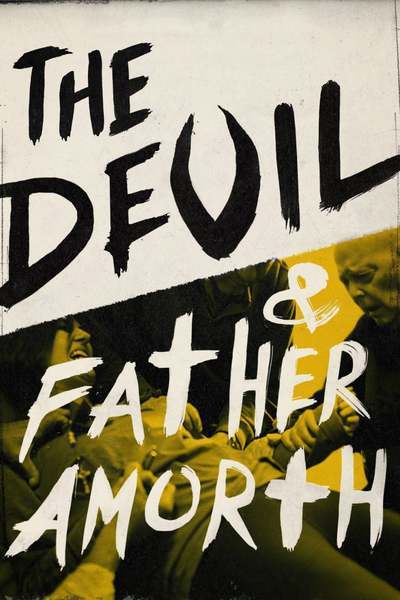
What the heck was this? This is like a movie you find on TV at three in the morning and you watch it because you’ve already watched the infomercials for shake weights and Tae Bo way too many times but you still regret watching it and wish you had just taken a sleeping pill five hours ago when you still had time to take it and wake up feeling refreshed for work. Which is too bad because a serious exploration of contemporary exorcisms (and tens of thousands of exorcisms still take place in Italy every year), and ecstatic experiences more generally, would have been interesting.
I very much enjoy and value these reviews. If anything I wish they were longer with quotes referenced to your insights/comments, especially for the biology/science stuff that I’m least familiar with. I’v read almost everything by Lacarre’ and am an ardent admirer. I like several of the movies they made from his work too. Adorno is significant for me, but not so much MM (how much of the Frankfurt school have you read?). His other stuff on aesthetic theory and the culture industry I think hold up well. CJung…important, some nagging problematics but hey who doesn’t (a bit too much Ayn Rand/Western imperialism?) but I like his more mystical musings when he’s not being too toatalizing, which so many of his ilk/milieu tend to be; that is too quick to universalize assumptions/anthropological “research.” I’m glad your reading VWoolfe. I haven’t for years but one of my old professors recently suggested I read “Moments of Being” and I’m going to give it a look. “Behind the cotton wool is hidden a pattern… the whole world is a work of art… there is no Shakespeare… no Beethoven… no God; we are the words; we are the music; we are the thing itself.” She, like Paul Celan, filled her pockets with rocks and drowned. I referenced that in one of my poems recently but I don’t think many noticed 🙁 I’m looking fwd to some of the films you recommend, especially Odessa. I got to know several pimps when I worked in the prison system. I don’t think Jean Genet was correct that, “The pimp has a grin, never a smile.” All the pimps I knew were very clownish and simpatico (like the nazis in “Bang the Drum Slowly”). Blessings in your work looking fwd to next month.